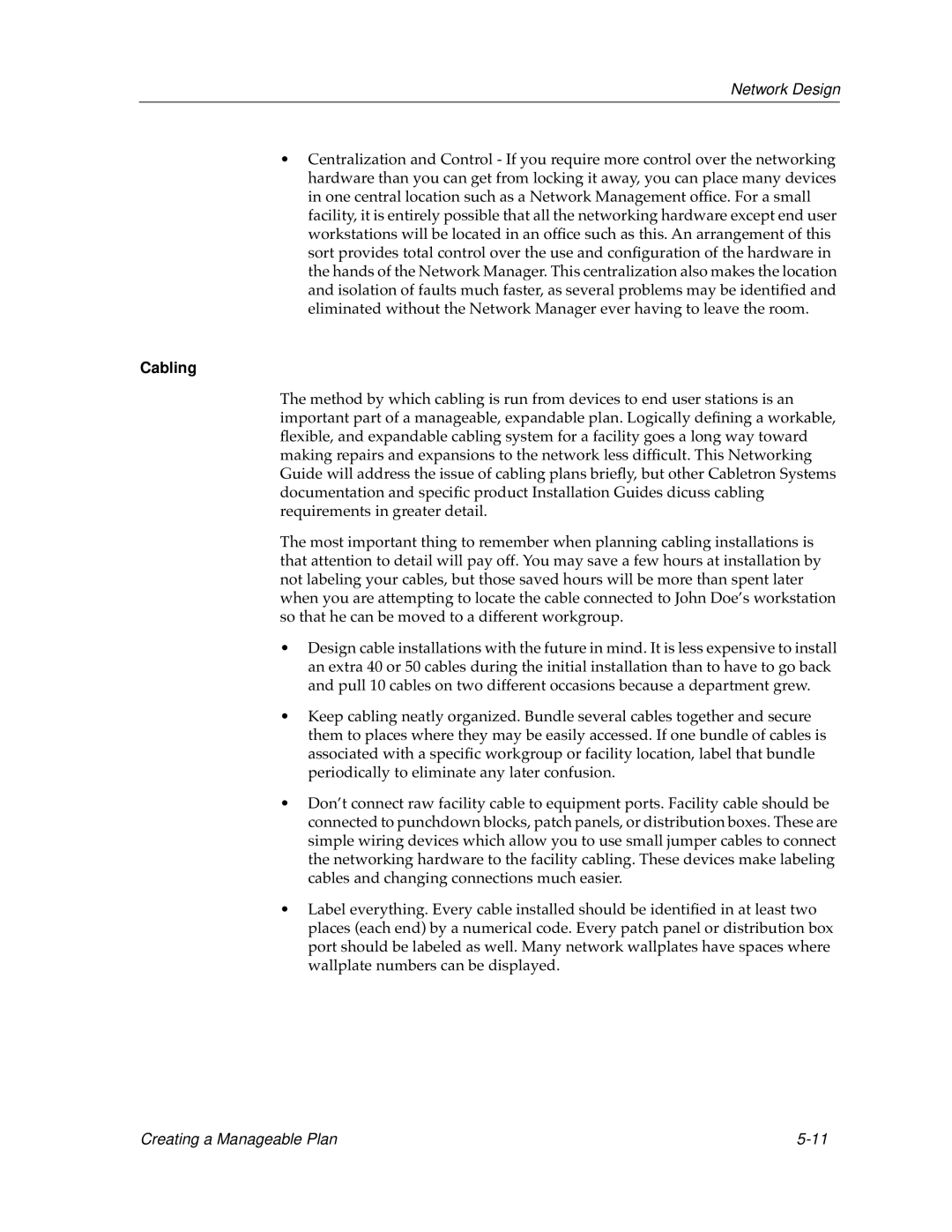Network Design
•Centralization and Control - If you require more control over the networking hardware than you can get from locking it away, you can place many devices in one central location such as a Network Management office. For a small facility, it is entirely possible that all the networking hardware except end user workstations will be located in an office such as this. An arrangement of this sort provides total control over the use and configuration of the hardware in the hands of the Network Manager. This centralization also makes the location and isolation of faults much faster, as several problems may be identified and eliminated without the Network Manager ever having to leave the room.
Cabling
The method by which cabling is run from devices to end user stations is an important part of a manageable, expandable plan. Logically defining a workable, flexible, and expandable cabling system for a facility goes a long way toward making repairs and expansions to the network less difficult. This Networking Guide will address the issue of cabling plans briefly, but other Cabletron Systems documentation and specific product Installation Guides dicuss cabling requirements in greater detail.
The most important thing to remember when planning cabling installations is that attention to detail will pay off. You may save a few hours at installation by not labeling your cables, but those saved hours will be more than spent later when you are attempting to locate the cable connected to John Doe’s workstation so that he can be moved to a different workgroup.
•Design cable installations with the future in mind. It is less expensive to install an extra 40 or 50 cables during the initial installation than to have to go back and pull 10 cables on two different occasions because a department grew.
•Keep cabling neatly organized. Bundle several cables together and secure them to places where they may be easily accessed. If one bundle of cables is associated with a specific workgroup or facility location, label that bundle periodically to eliminate any later confusion.
•Don’t connect raw facility cable to equipment ports. Facility cable should be connected to punchdown blocks, patch panels, or distribution boxes. These are simple wiring devices which allow you to use small jumper cables to connect the networking hardware to the facility cabling. These devices make labeling cables and changing connections much easier.
•Label everything. Every cable installed should be identified in at least two places (each end) by a numerical code. Every patch panel or distribution box port should be labeled as well. Many network wallplates have spaces where wallplate numbers can be displayed.
Creating a Manageable Plan |
